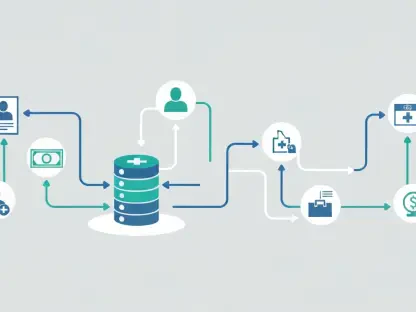As we approach 2025, the DevOps landscape is undergoing significant transformations. The focus is increasingly on automation, scalability, and operational efficiency. This article explores the emerging and established trends that will shape DevOps strategies in the coming years, highlighting key tools and practices expected to gain traction or decline.
Emerging DevOps Trends
GitOps: Centralized Management and Automation
GitOps is gaining prominence as a method for managing infrastructure and application configurations. By using Git as the central repository, organizations can achieve centralized visibility, automated provisioning, and simplified automated testing. Introduced in 2016, GitOps has recently seen a surge in adoption and is expected to become even more prevalent by 2025. This approach not only streamlines operations but also enhances collaboration among development teams.
The benefits of GitOps are manifold. It allows for version-controlled infrastructure, making rollbacks and audits more straightforward. Additionally, it promotes a declarative approach to infrastructure management, reducing the risk of configuration drift. As organizations continue to seek ways to improve efficiency and reduce errors, GitOps is poised to play a crucial role in their DevOps strategies. Moreover, the consistency provided by a single repository ensures that teams have a unified source of truth, minimizing discrepancies and fostering better alignment across various project facets.
Platform Engineering: Accelerating Development
Platform engineering is another emerging trend that is set to revolutionize DevOps practices. This approach involves providing development teams with preconfigured tools and services, thereby accelerating application development. By streamlining the provision of resources, platform engineering eliminates the complexity of assembling development tools, allowing teams to focus on coding and innovation.
The potential for growth in platform engineering is significant. As organizations strive to reduce time-to-market and enhance productivity, the demand for preconfigured development environments will increase. This trend not only supports faster development cycles but also fosters a culture of continuous improvement and innovation within DevOps teams. As businesses look to stay competitive, having readily available tools reduces the overhead, and teams can dedicate more time to refining their applications.
Infrastructure Static Code Analysis: Ensuring Security and Compliance
Another emerging trend expected to gain traction in the DevOps landscape by 2025 is Infrastructure Static Code Analysis. This practice involves analyzing code that defines infrastructure, allowing teams to identify security vulnerabilities and compliance issues early in the development process. By integrating static code analysis tools into the CI/CD pipeline, organizations can ensure that their infrastructure is secure and compliant before it is deployed.
The benefits of infrastructure static code analysis are clear. It provides a proactive approach to security, allowing teams to identify and fix vulnerabilities before they can be exploited. Additionally, it supports compliance initiatives by ensuring that infrastructure code adheres to relevant regulations and standards. As organizations continue to prioritize security and compliance, infrastructure static code analysis is expected to become an essential component of DevOps strategies.
AIOps: Leveraging Artificial Intelligence
As the adoption of artificial intelligence (AI) continues to grow, AIOps—applying AI to IT operations—will become increasingly important in the DevOps landscape. AIOps involves using AI and machine learning algorithms to analyze data from various IT operations tools and devices, allowing teams to identify and resolve issues more quickly and efficiently. By automating routine tasks and providing insights into complex problems, AIOps can help organizations improve the reliability and performance of their IT systems.
The potential for growth in AIOps is significant. As organizations continue to generate large volumes of data, the need for advanced analytics and automation tools will increase. AIOps not only enhances operational efficiency but also supports proactive problem-solving, allowing teams to address issues before they impact users. This trend is expected to play a crucial role in the future of DevOps, helping organizations leverage the power of AI to optimize their IT operations.
Established but Continuing DevOps Trends
Policy-Based Governance: Ensuring Security and Compliance
Policy-based governance remains a vital component of DevOps strategies. This practice involves defining and enforcing IT rules automatically through code, ensuring security and compliance within increasingly complex IT environments. As organizations continue to adopt cloud-first strategies and scale their operations, the importance of policy-based governance cannot be overstated.
The benefits of policy-based governance are clear. It provides a framework for maintaining security and compliance, even as IT environments become more complex. By automating the enforcement of policies, organizations can reduce the risk of human error and ensure that their systems remain secure and compliant. Moreover, policy-based governance supports auditability and traceability, enabling organizations to demonstrate compliance with regulations and standards.
SaaS: Reducing Maintenance Burden
Software as a Service (SaaS) continues to be a popular deployment model for commercial applications. By reducing the maintenance burden on DevOps teams, SaaS allows organizations to focus on their core competencies and strategic initiatives. The adoption of SaaS is likely to stay strong in 2025, as more organizations recognize its benefits.
SaaS offers several advantages, including reduced infrastructure management overhead and improved scalability. By leveraging SaaS solutions, organizations can quickly deploy and scale applications without the need for extensive on-premises infrastructure. This trend supports the broader shift toward cloud-based strategies and is expected to remain a key component of DevOps practices. Additionally, SaaS providers often offer robust support and ongoing updates, ensuring that applications remain up-to-date and secure.
Cloud Migration: Embracing Scalability and Flexibility
Cloud migration has been a significant trend in the DevOps landscape for several years, and it is expected to continue gaining momentum in 2025. By moving workloads from on-premises infrastructure to cloud-based services, organizations can achieve greater scalability, flexibility, and cost-efficiency. Cloud migration allows teams to quickly provision and scale resources, enabling them to respond to changing business needs and demands.
The benefits of cloud migration are numerous. It reduces the need for costly and time-consuming hardware maintenance, allowing teams to focus on innovation and strategic initiatives. Additionally, cloud-based services often come with built-in redundancy and disaster recovery capabilities, ensuring high availability and reliability. As more organizations adopt cloud-first strategies, cloud migration will remain a critical component of DevOps practices, supporting the broader goals of automation and efficiency.
Serverless Technology: Streamlining Operations
Serverless technology has emerged as a powerful tool for DevOps teams, allowing them to deploy applications without managing server environments. This approach not only streamlines operations but also reduces costs and improves scalability. As serverless options become more viable, their adoption is expected to increase in 2025, further enhancing the efficiency of DevOps practices.
The advantages of serverless technology are clear. It allows teams to focus on writing code rather than managing infrastructure, reducing the complexity and overhead associated with traditional server environments. Additionally, serverless platforms automatically scale resources based on demand, ensuring optimal performance and cost-efficiency. As more organizations recognize the benefits of serverless technology, its adoption is expected to grow, supporting the broader trend toward automation and operational efficiency.
Declining DevOps Practices
Virtual Machine Usage: A Shift Toward Serverless
As serverless options become more viable, the dependence on virtual machines (VMs) is expected to decline. While VMs will still play a role in certain contexts, their usage is likely to decrease as organizations adopt more modern, automated solutions. The shift toward serverless technology reflects a broader trend toward reducing management complexity and enhancing operational efficiency.
Serverless technology allows DevOps teams to deploy applications without managing server environments. This approach not only streamlines operations but also reduces costs and improves scalability. As more organizations recognize the benefits of serverless technology, the reliance on VMs is expected to diminish, paving the way for more efficient and automated DevOps practices. Furthermore, serverless architectures often lead to faster deployment times and easier maintenance, making them an attractive option for many development teams.
Configuration Management Tooling: Reduced Reliance
As organizations continue to evolve their DevOps practices, the reliance on traditional configuration management tools is expected to decline. The shift toward more automated and integrated solutions is evident as companies seek to streamline operations and reduce manual interventions. While configuration management tools will still have their place, their usage is likely to decrease in favor of more modern approaches such as infrastructure as code (IaC) and automated configuration management through continuous deployment pipelines. This trend is indicative of the ongoing pursuit of maximal efficiency and minimal human error in deployment processes.









